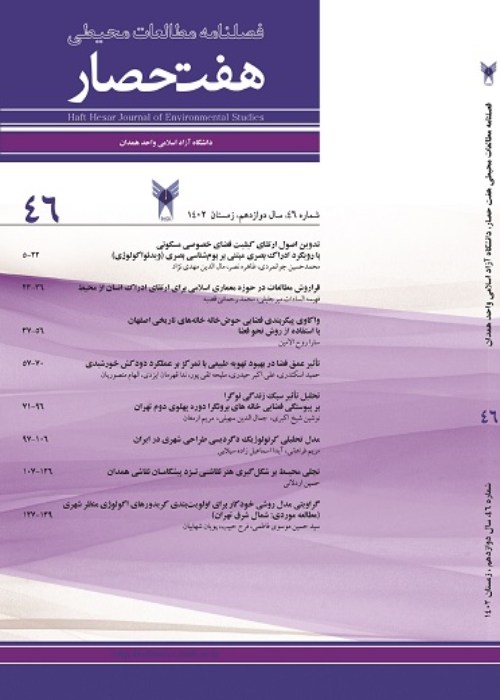Analysis of the effectiveness of the procedure of dealing with the problem in the architectural design process and its relationship with the level of creativity in the architectural product
Nowadays, due to the complexities in the issues and extensive changes in the world of architecture, the benefit of creativity in design is felt more and more. However, the important point is the issues that are faced by architecture today with these developments, which are different from the challenges and issues of previous eras. As a result, this condition requires a unique procedure for dealing with issues so as to create creative works. The necessity of conducting this research is to pay attention to the effect of creativity and its strengthening in the way of individual or group attention. The aim of the present research is to measure the level of architectural creativity at both individual and group levels to develop the desired strategy in creativity education and strengthen it, achieving the desired results in the area of the architecture profession.
In this study, the collected data and materials will be examined with a descriptive-analytical method, and finally, we will analyze the results of the test by drawing diagrams using the quantitative data extracted from the test in the educational environment. This study is applied in terms of purpose. Moreover, the Delphi method was used to extract the factors of measuring and evaluating the design method as "individual or group" and the design product.
Based on the findings of the research, measuring the method of facing the issue of architecture (group method), which can be called a method fitting the current complex structure of architecture, after measuring the (individual) method and receiving its results, as controlled and imposing limitations to confirm its validity in subjects with the same subject of the individual method and the same individuals as a group showed; taking advantage of the group method, in which individuals simply get together to carry out architectural design, is not only positive but according to what was seen in the test, it also leads to a decrease in creativity compared to the individual method.
The results of the research showed that the scores for measuring and evaluating the level of creativity in the designed product in the group method, in groups that pay attention to the variables affecting the group, including size, diversity, cohesion, and communication system, and so-called synergy methods have occurred at a higher level than the scores in an individual method. It should be considered that synergy will occur when there is a set of conscious, coherent, and coordinated efforts by people to achieve a common goal(s) by which the promotion of creativity appears to be one of its consequences. However, it is obvious that architectural design relies on individual taste and creativity as well as group synergy and support for common ideas. Therefore, it appears that, in addition to focusing on the individual level, it is essential to pay attention to the ways of cultivating creativity at the group level in the area of education planning.
- حق عضویت دریافتی صرف حمایت از نشریات عضو و نگهداری، تکمیل و توسعه مگیران میشود.
- پرداخت حق اشتراک و دانلود مقالات اجازه بازنشر آن در سایر رسانههای چاپی و دیجیتال را به کاربر نمیدهد.


